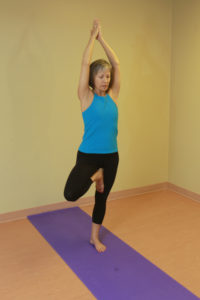Although achieving a tight butt may be a primary reason for physical exercise, the same cannot be said about our hips. Tight hips are the nemesis of modern society where most of our day is spent sitting at a desk, on a couch or behind a steering wheel.
Our hips are two of our largest joints. They consist of the balls or heads of the femur bones in the upper legs and the hip sockets, which are located midway between the sit bones and the front hip bones in the pelvis. A lack of physical mobility in our hip joints translates into reduced circulation and inflexibility as tension and tightness increase. To further exacerbate this already limited capacity, our hips are our emotional junk drawers. When we do not resolve our negative feelings — sad, stressful memories, financial fears, relationship wreckages — these feelings do not just dissipate into thin air. We store our unresolved emotions and tensions, particularly those regarding control, in our bodies. Because our hips are our stabilizers and storage units, they often inherit the brunt of our emotional baggage.
If you attend yoga classes and have experienced a hip-opening sequence, you may have also noticed a tendency to tear up. This emotional release creates space for breath, blood and being to flow more gracefully. With open hips, anxiety, fear, depression and back pain can become conditions of the past. However, hypermobile yogis, because of their flexibility and reduced physical sensation, can move too deeply into a pose, which over time, causes damage to the joints. In this case, be wary of moving beyond your edge and out of alignment.
Those of us with reduced flexibility can open our hips by consistently moving these ball-and-socket joints in their four natural directions — externally, internally, flexed and extended. An internal rotation is achieved by rolling the heads of the femurs toward the midline of the front body. In an external rotation, the femurs’ heads rotate outward, away from the midline. In flexion and extension, the femur heads roll back or forward respectively as illustrated in the final two poses of the sequence below.
Action:
Use your “inner eye” to find your ball-and-socket hip joints, located approximately five centimetres down from your front hip bones and behind many layers of inner groin muscles. As you move through each of the following poses, feel the ball of the femur rolling in the hip socket. For more advanced practitioners, also connect the ball of the femur to an imaginary ball in the centre of your heel bone.
Photo by Wayne Glowacki
BADDHA KONASANA (Bound Angle Pose)
Sit on a height that allows your spine to lift and lengthen. Feel the external rotation of the femur ball in the hip socket as you bring the soles of your feet together and your knees release out to the sides.
Photo by Wayne Glowacki
TRIANG MUKHAIKAPADA PASCHIMOTTANASANA (Three-Limbed Forward Bend)
Beginning in Dandasana, sit on the height you need to keep your hips even, legs straight and spine lifting. Lean to your left, bend your right knee and guide your ankle to the side of your right hip. Keep your inner knees together. Find the internal rotation in both femur balls in the hip socket, especially in the bent knee leg. The straight leg is also in flexion.
Photo by Wayne Glowacki
SALAMBA SETU BANDHA SARVANGASANA (Supported Bridge Pose)
Start by lying down with your shoulders resting on a folded blanket, knees bent and feet on the floor. Press into your feet and upper arms to lift your pelvis, and place a block under your sacrum. Find the internal rotation of the femur ball in the hip socket as you stretch your right foot out along the floor, which also brings your right leg into extension.
 Winnipeggers Helen Maupin and Candace Propp are authors of the Creating Space: Yoga Actions. To discover more actions for healthy leg and hip movements, see Creating Space: Yoga Actions for Pelvis & Psoas. Maupin and Propp are certified teachers through Yoga Centre Winnipeg. For yoga teacher training with Stacy Schroder, go to www.sereneyogastudio.com.
Winnipeggers Helen Maupin and Candace Propp are authors of the Creating Space: Yoga Actions. To discover more actions for healthy leg and hip movements, see Creating Space: Yoga Actions for Pelvis & Psoas. Maupin and Propp are certified teachers through Yoga Centre Winnipeg. For yoga teacher training with Stacy Schroder, go to www.sereneyogastudio.com.







